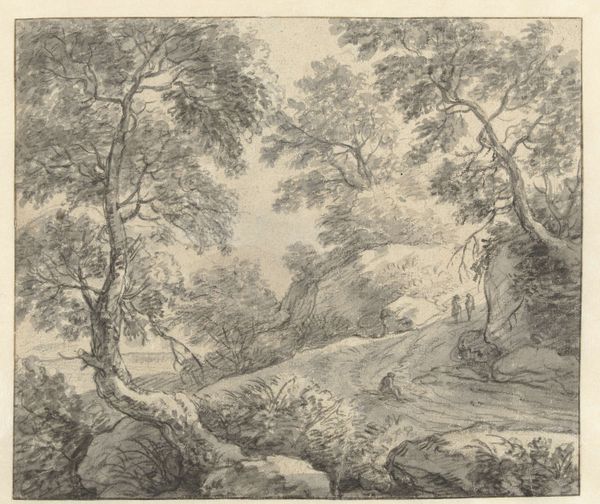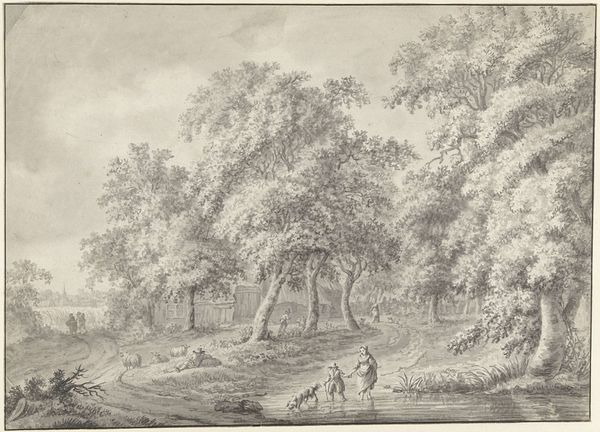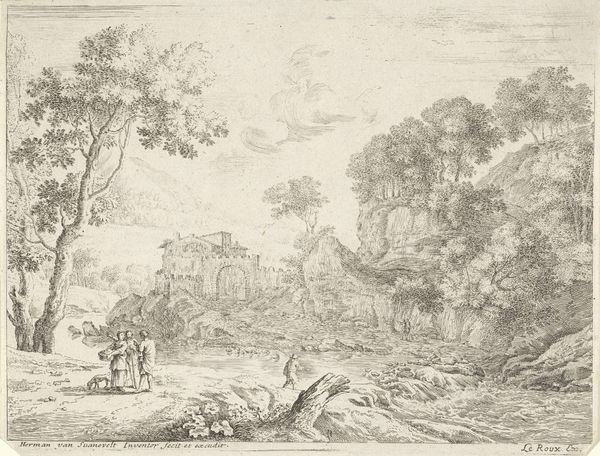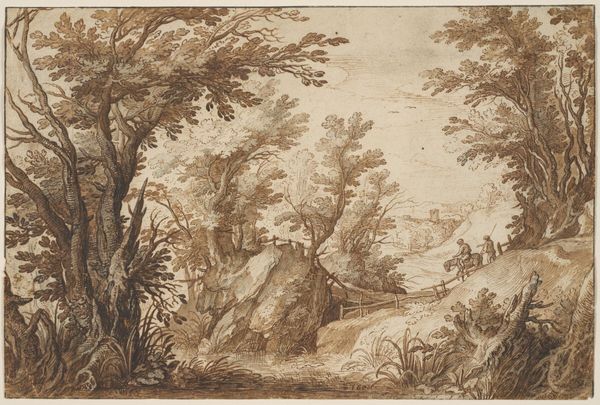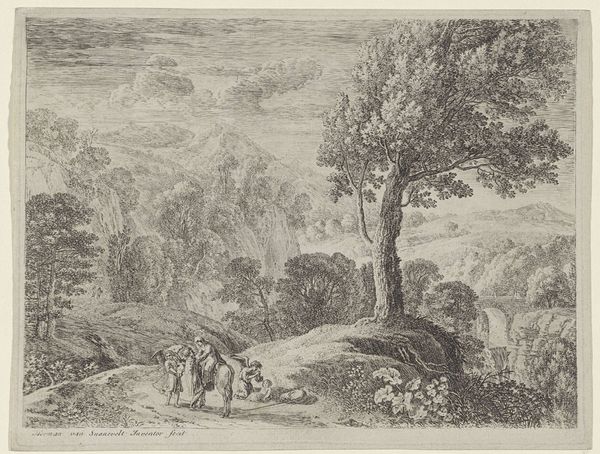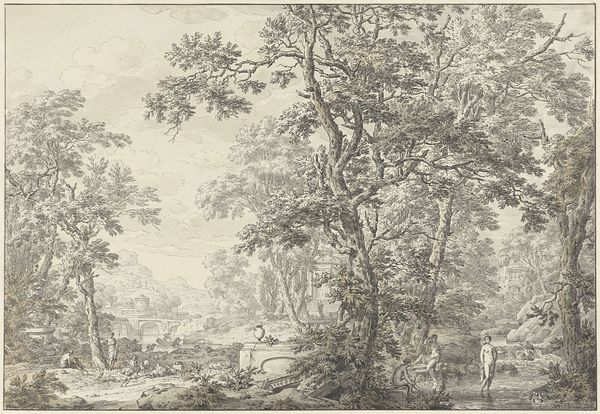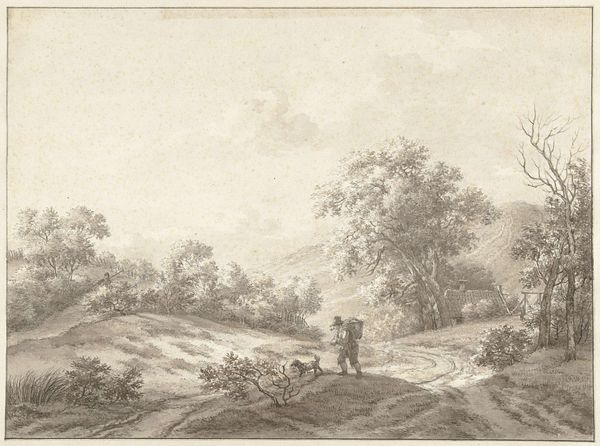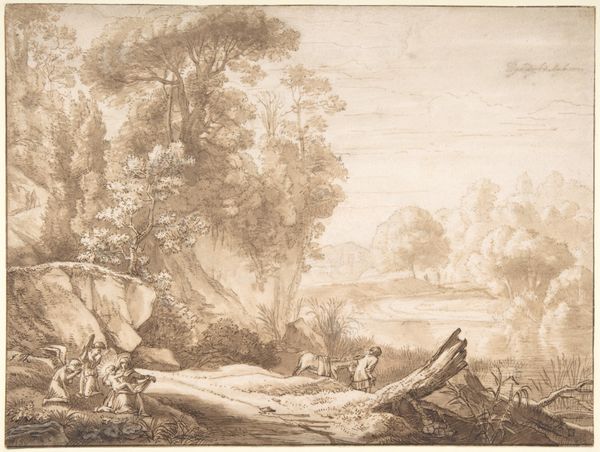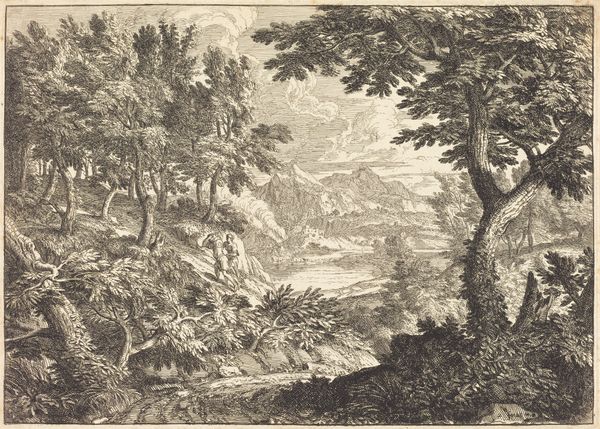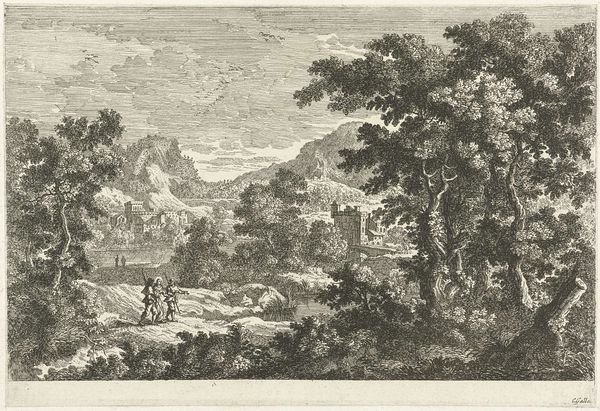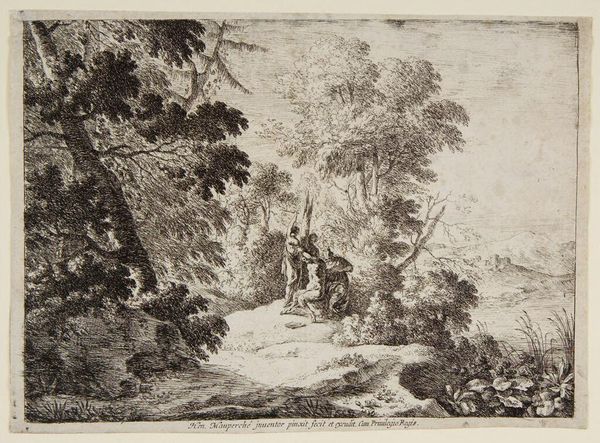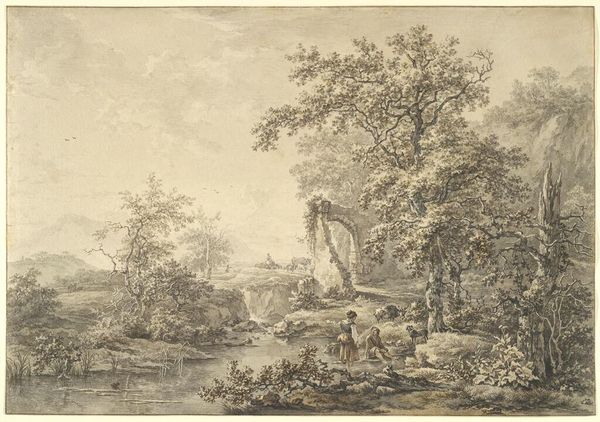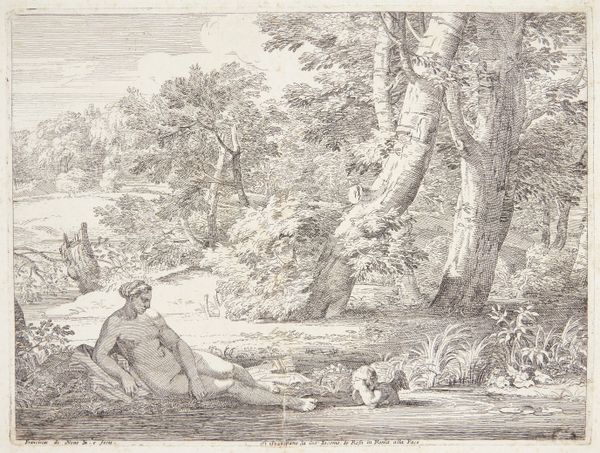
drawing, print, etching
#
pen and ink
#
drawing
#
ink drawing
#
baroque
# print
#
pen sketch
#
etching
#
landscape
Dimensions: 165 mm (height) x 230 mm (width) (bladmaal)
Curator: This fine pen and ink drawing before us, dating from 1640 to 1723, is titled "Arkadisk landskab med tre kvinder" – or Arcadian landscape with three women. Abraham Genoels created it. You can find it here at the SMK, Statens Museum for Kunst. Editor: My initial reaction is a sense of tranquil remoteness. The monochromatic etching with its delicate linework creates a world set apart, idyllic perhaps. The figures seem both present and distant, like figures from a dream. Curator: Absolutely. Genoels uses the Arcadian landscape tradition to tap into this idea of a utopian space. The Baroque period was rife with attempts to recapture an imagined classical past, often to legitimize power structures or express cultural aspirations. Arcadia itself became a powerful symbol. Editor: The symbol of retreat, certainly. Looking closer, the figures, though seemingly classical in dress, strike me as somewhat ordinary. Their gestures and arrangement feel more staged than spontaneous, as if presenting a specific type of idealized life, a world accessible only to the cultured eye. Do you see that potentially staged quality affecting its accessibility to a contemporary audience? Curator: That's an insightful point. While ostensibly representing simple pastoral life, the imagery and its historical context become part of an elite, highly cultivated intellectual framework. The symbol itself, Arcadia, speaks of the power of art to reshape landscapes both physical and cultural into visions of carefully controlled harmony. And yet there's that little figure walking beside the small boat in the distance, it adds a touch of unscripted realness into it. Editor: The symbolism and its staged-ness bring us back to a central role of the image in Baroque culture: using carefully constructed artifice to communicate status and cultivate taste. Today, with our focus on immediacy and "authenticity", those kinds of layers seem to be appreciated as part of an image’s richness, adding a contemporary element, rather than hindering interpretation. Curator: Indeed. By acknowledging this image’s complex interplay between surface serenity and carefully designed artifice, we, like the 17th century viewer, can see and perhaps decode, the encoded cultural meanings inherent within the visual symbol. Editor: A fascinating dialogue between utopia and power, meticulously rendered on this piece of paper, that offers much food for thought on cultural imagery then and now.
Comments
No comments
Be the first to comment and join the conversation on the ultimate creative platform.
